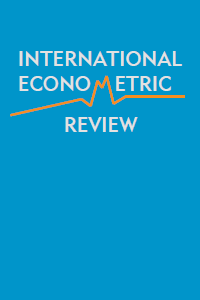Learning from Errors While Forecasting Inflation: A Case for Intercept Correction
Learning from Errors While Forecasting Inflation: A Case for Intercept Correction
Structural changes are quite common in macroeconomic time series. Internal/external shock(s) may cause significant structural change in any economy. Simplest form of such change is observed as shift in constant of an underlying relationship between a pair of macroeconomic variables. Forecasting from such a model assuming no structural break is tantamount to ignoring the important aspects of underlying economy and mostly results in forecast failure. Intercept correction (adjustment for the realized forecast error) is a method for accommodating such ignored structural break(s). We use a simple model to forecast inflation (based upon single lag of money supply growth) for 25 countries and compare its performance with a) the same model with optimal intercept correction, b) the same model with half intercept correction, and c) a random walk model (with drift). Optimal intercept correction approach outperforms in forecasting next period inflation compared to one from a) the same model without intercept correction, b) the same model with half intercept correction, and c) random walk model. We also observe that higher correction is needed for countries with more volatile inflation.
Keywords:
inflation forecasting, intercept correction,
___
- Castle, J. L., Clements, M. P., and Hendry, D. F. (2016), “An Overview of Forecasting Facing Breaks”, Journal of Business Cycle Research, Vol. 12, 3-23
- Clements, M. P. and Hendry, D. F. (1996), “Intercept Correction and Structural Change”, Journal of Applied Econometrics, Vol. 11, 475-494
- Hanif, M. N. and Malik, M. J. (2015), “Evaluating Performance of Inflation Forecasting Models of Pakistan”, Research Bulletin. Vol. 11. No. 1
- Stock, J. H. and Watson, M. W. (2008), “Philips Curve Inflation Forecasts”, Conference Series; [proceedings], Federal Reserve Bank of Boston, Vol. 53
- ISSN: 1308-8793
- Başlangıç: 2009
- Yayıncı: Ekonometrik Araştırmalar Derneği
